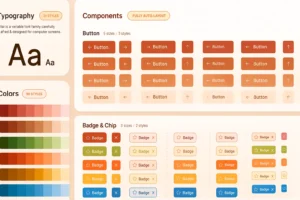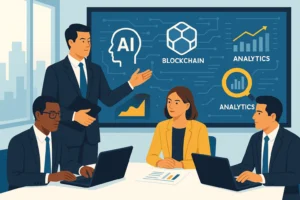Apple Glass. Love It or Hate It. Doesn’t Matter. It’s Changing Design.

Apple’s new Liquid Glass design language is here. It’s bold. It’s reactive. It’s emotional. Maybe even beautiful.
Also? Maybe a little hard to read. Maybe not so friendly for accessibility. But will it change how people design? Yes.
Apple Doesn’t Just Signal. It Sets the Pace.
Flat design shifted the way we built interfaces across the board. Apple helped lead that shift. Skeuomorphism? Same story. These weren’t just visual treatments. They influenced how teams everywhere approached hierarchy, behavior, and clarity.
Liquid Glass is different, but it’s not just decoration. It is a signal of where things are heading. It may not be fully formed, but it is strong enough to push designers out of neutral.
We will see brands experiment with glassy UI. We will see motion, light play, texture, and depth start creeping into dashboards and apps. Design systems will start to absorb this language in pieces. That is how shifts begin.
Flat Design Had a Great Run. But It’s Not Untouchable.
Flat design gave us clarity. It gave us speed. It made UI feel honest and accessible. But it also became safe. Predictable. Sometimes sterile.
Liquid Glass is a reaction to that. It brings emotion back into the interface. It uses light and motion as design elements. That is not a regression. That is a recalibration.
This is what I am asking now:
- Can emotional interfaces also be clear and functional?
- Can motion and depth improve understanding, not just decorate?
- Are we entering a new phase of product design where presence matters as much as utility?
I think we might be.
My Lens Right Now Is User-First
I design for clarity, not theater. In B2B or public systems, design has to work under pressure. A logistics dashboard. A hospital intake form. An education portal for first-time users.
These are high-stakes environments. Not places where the UI should shimmer unless that shimmer earns its keep.
When I look at Liquid Glass, I see polish. I do not yet see proof that it improves product experience in environments where clarity, control, and trust matter most.
But I also know this: interfaces evolve. The way we design now will shift. This might be the beginning of that shift.
Design Trends Don’t Wait for Approval
We do not need a consensus for trends to spread. Designers will start mimicking this visual system just like they did with neumorphism, glassmorphism, brutalism, and flat design. Some of it will be shallow. But some of it will unlock new ways of thinking.
Apple knows what it is doing. This is not just style. It is a provocation.
And it will move.
I’ll Explore. I’ll Test. I’ll Push.
Liquid Glass might not be fully baked, but it does not need to be. It is already shaking things. And that matters.
I will explore it soon. I will test it in real-world systems. I want to know how it holds up under pressure, not just on keynote slides.
And yes, I do think this is preparing us for what comes next. Smart glasses. Interfaces that blend with space. Environments where the screen disappears and the experience lives in front of your eyes.
Design is moving. Trends are shifting. And I plan to be in the middle of that shift, not catching up to it later.








